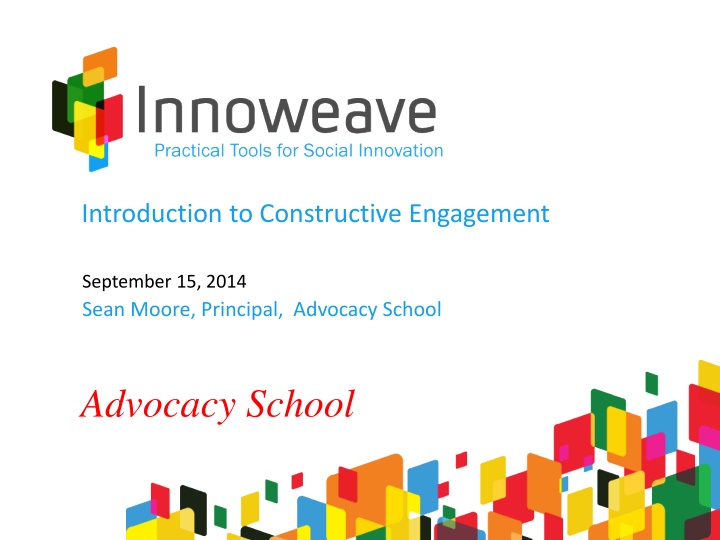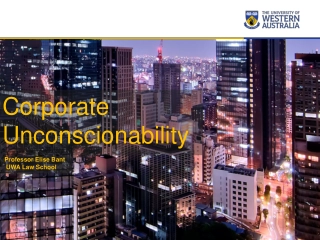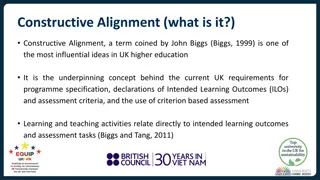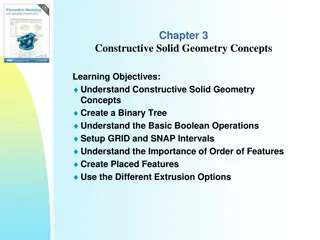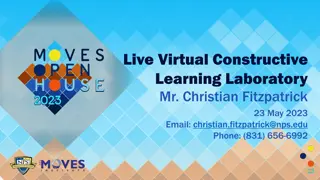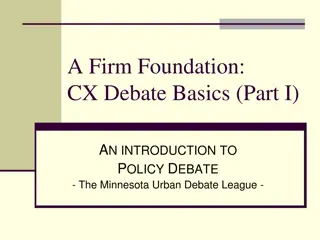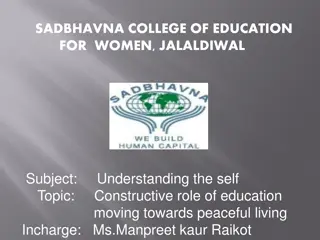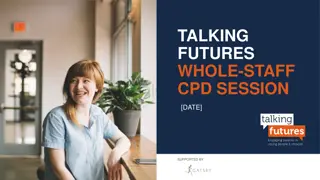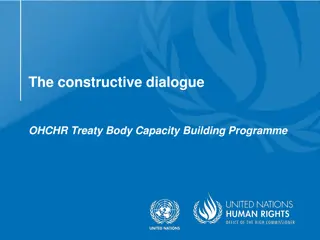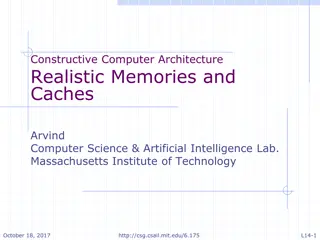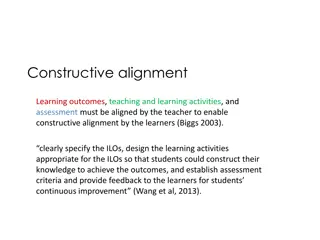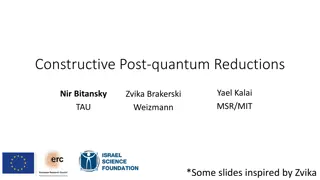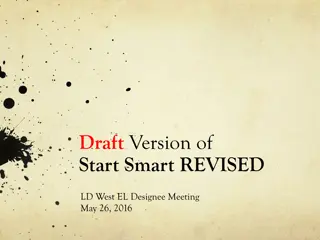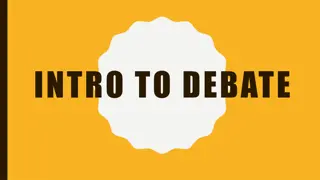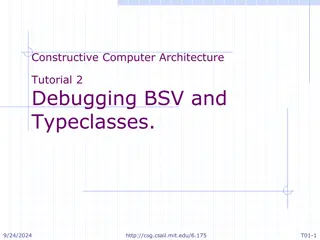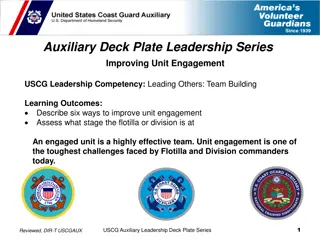Introduction to Constructive Engagement Strategies
Effective strategies for engaging policymakers, practitioners, and the public to drive specific organizational changes. Learn key principles, case studies, and insights from a successful engagement workshop. Gain a deeper understanding of policy advocacy and relationship-building for mission advancement
Download Presentation

Please find below an Image/Link to download the presentation.
The content on the website is provided AS IS for your information and personal use only. It may not be sold, licensed, or shared on other websites without obtaining consent from the author.If you encounter any issues during the download, it is possible that the publisher has removed the file from their server.
You are allowed to download the files provided on this website for personal or commercial use, subject to the condition that they are used lawfully. All files are the property of their respective owners.
The content on the website is provided AS IS for your information and personal use only. It may not be sold, licensed, or shared on other websites without obtaining consent from the author.
E N D
Presentation Transcript
Introduction to Constructive Engagement September 15, 2014 Sean Moore, Principal, Advocacy School Advocacy School
Todays Constructive Engagement Webinar Introduction to Constructive Engagement What it is Why it s important Who to engage Other approaches (not CE) Key principles Case study examples Innoweave Constructive Engagement Workshop
What is Constructive Engagement? An approach to developing effective strategies to understand and work with policy makers, practitioners and the public to make specific changes that will directly improve the outcomes that an organization seeks to advance their mission. Often involves: clarifying barriers and opportunities to advancing one s mission understanding the priorities, beliefs, and constraints of those who you engage taking into account the dynamics of the decision-making that one is trying to influence policy engagement policy advocacy
Case Study Summary: RDSP Objective: A clear goal for PLAN: Improve income security for people with disabilities Engagement Process: Long-term engagement with government (10 years) to facilitate the introduction of a new savings vehicle (RDSP) In-house work on technical elements to help design the proposed model Instructive Learnings: Constantly meeting new players in the process Listened carefully to officials when offered advice Secured champions within government DIY Public Policy and persistence Public thanks and recognition
Why is it important? Critical to advancing mission and effecting change Broaden your perspective of issue / challenge Major change always involves some type of change by authority A vehicle to get closer and more involved in broader community Engagement and relationship building as investment
Who do you engage? Policy makers, practitioners and the public Governments Local / Municipal Provincial Federal Corporate, Professional and Trade Interests Professional Associations Professional Regulators Practitioner Groups Corporations Trade and Industry Associations o o Other Parapublic and Public Authorities Hospitals Health Authorities School Boards Conservation Authorities Utilities Police Commissions o Trade and Public Service Unions Civil Society o Faith-Based Organizations Environmental / Conservation Groups Social Justice NGOs Charities Community Associations Service Organizations Practitioners (teachers, doctors) & others who can be reached directly o
Who do you engage? Policy makers, practitioners and the public To know who to engage, ask key questions, such as: o Who can help influence others on this issue? o Who is likely to help you in the effort? o What other organizations or considerations must you take into account? o If you are unsure, ask for advice from others in your field, or consult open sources of information to see who in politics and public service may have influence on your issue area. For example, you could search key terms, names or offices in contact databases, e.g.: GEDS (Government Electronic Directory Service) - Federal INFO-GO Ontario o During the workshop, we will ask you to put together a preliminary list of people you think you may want to engage. Please come prepared with some ideas.
Other Types of Engagement Not the focus of this module, but possibly part of later stages of engagement efforts: Litigation Direct Action / Civil Disobedience Grass Roots Advocacy News Media / Social Media Strategies (e.g. public awareness raising)
Principles of Constructive Engagement 1. Clear Purpose 2. Understanding the System of the Issue 3. Strategic Inquiry 4. Crafting the Ask 5. Securing Champions / Sponsors on the Inside 6. Collaboration, Coalitions and Partnering 7. Do-It-Yourself Public Policy
1. Clear Purpose Identifying opportunity or challenge Articulating La Problematique Clear narrative / story
2. Understanding the System of the Issue Mapping: Decision-Makers Influencers Stakeholders Key Contact List
3. Strategic Inquiry Empathy, Exploration and Seeking Advice Policy Context Positioning Process Precedent Politics Strategic inquiry connects to how you craft your ask
4. Getting the Ask Right Best to get it right the first time Requires understanding perspective of those you are trying to influence and often other stakeholders
5. Securing Champions and Sponsors on the Inside Key sources of information, insight, advice Decision makers and/or influencers Absence of them indicates needs for revised ask
6. Collaboration, Coalitions and Partnering Success seldom experienced alone Unorganizations vs Formal Structures Coalitions: Usual Suspects Strange Bedfellow Partnering and Networks Policy engagement with decision makers
7. Do-It-Yourself Public Policy Producing documentation / propositions in a form that can be used by influencers and decision makers Crafted with user and end-use in mind Suitable for cut and paste Taking initiative in convening connections with decision makers and stakeholders
Constructive Engagement: Case studies PLAN and the RDSP Long-term engagement with government to improve income security for people with disabilities (the RDSP) Caregivers Coalition Engaging political parties to include new points in their election platforms that enable care giving (Caregivers tax credit) The Mustard Case Engaging government on an issue of low priority (food container regulations) but high organizational impact, with a key role for outreach and engagement with other stakeholders
Case Study: RDSP Instructive Learnings Clear goal income security for people with disabilities Constantly meeting new players in the process Listened carefully to officials when PLAN asked for advice Secured numerous champions and sponsors within government Undertook DIY Public Policy by preparing material in the way government needed it Persistence more than 10 years, 3 governments, 2 parties Provided public thanks and recognition on an on-going basis
Case Study: Caregivers Instructive Learnings Build and maintain relationships among elected and unelected officials key contact list Maintain a non-partisan approach Practice strategic inquiry before framing your ask Understand perspective of those you re trying to influence Getting into political parties platforms takes initiative
Case Study: Mustard Instructive Learnings Understand how decisions get made and by whom Consider your ask in light of what one hears as part of strategic inquiry ATI request can provide important insight Stakeholder engagement is a must even if you have to do it Provide to government information and documentation in a form it can use (i.e. DIY Public Policy) Avoid needlessly politicizing the issue
Elements of the Constructive Engagement Module Webinar: Introduction to Constructive Engagement and key concepts Online self-assessment: review your suitability for a workshop Workshop: day-long working session for teams of 3 4, with post-workshop exercise Follow-up session: 20 minute coaching session with facilitator 4 weeks following workshop to review post-workshop exercise Coaches: experts who can help you execute your constructive engagement plan Grants: support for you to work with a coach and enact your plan
About the Upcoming Constructive Engagement Workshops Material covered: How to develop a draft engagement strategy (e.g. intended key outcomes, barriers in policy & practice, tactics) Key questions for future engagement efforts (e.g. resourcing) Calgary: November 14, in partnership with the Calgary Chamber of Voluntary Organizations. Application due Oct. 14 ($150 workshop host fee per team) Ottawa: November 19,in partnership with Carleton University and United Way Ottawa.Application due Oct. 20 ($250 workshop host fee per team) Toronto: November 26, in partnership with Sustainability Network. Application due Oct. 27 ($300 workshop host fee per team) Apply online at Innoweave.ca by completing a self-assessment and then using the online application tool.
Pre-workshop exercise: Understand your issue & Identify the obstacles CE might address If accepted to take part in the workshop, you must complete the following pre- workshop exercise: What s your organization s primary purpose (mission)? What major obstacles have you identified to date (e.g. behaviours or policies that impede progress on your mission)? And how will removing those obstacles result in improving the outcomes that you generate and advancing your mission? What is the root cause of these obstacles? Who could help you address these obstacles/root causes (e.g. governments, practitioners, or segments of the public)?
Thank You www.Innoweave.ca
